1. A cyclist is participating in a race and wants to reduce air resistance to increase their speed. Which of the following strategies would be most effective in achieving this goal?
a) Using larger and wider wheels on the bicycle.
b) Riding in an upright position to increase the body's surface area.
c) Wearing loose-fitting clothing to reduce friction with the air.
d) Using a streamlined helmet and crouching to minimise air resistance.
Answer: d) Air resistance, also known as drag, is a significant factor that opposes a cyclist's forward motion. Using a streamlined helmet contributes to reducing the impact of air resistance on the head, as the helmet's design minimises turbulence and drag. The combination of a streamlined helmet and a crouched position is the most effective strategy for decreasing air resistance and increasing speed during a race.
2. A person is pushing a heavy box across a rough floor with a constant force of 50 N. The frictional force between the box and the floor is 40 N. What is the resulting motion of the box?
a) The box will move with a constant velocity.
b) The box will accelerate in the direction of the applied force.
c) The box will decelerate and eventually come to a stop.
d) The box will not move due to the equilibrium of forces.
Answer: b) In this scenario, the person is exerting a constant force of 50 N on the box, and the frictional force between the box and the floor is 40 N in the opposite direction. Since the applied force (50 N) is greater than the frictional force (40 N), there is a net force acting on the box in the direction of the applied force. This means that the box will start moving and its speed will increase over time as long as the applied force continues to be greater than the frictional force.
3. A student conducts an experiment to investigate the relationship between the weight of an object and the frictional force acting on it. The student places different weights on a wooden block and pulls the block across a smooth surface. Which graph below would represent the relationship between weight and frictional force?
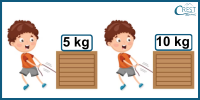
a) 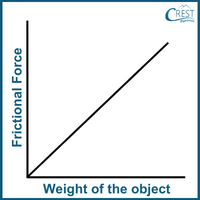
b) 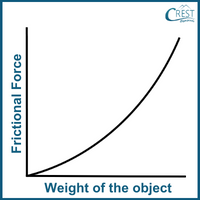
c) 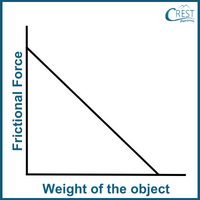
d) 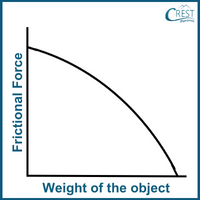
Answer: a) As the weight of the object increases, the frictional force also increases in a linear manner. Therefore, Graph a, which depicts a linear relationship, would be the most appropriate representation of the relationship between weight and frictional force in this experiment.
4. In the following question, you will find an assertion and a reason. Select the appropriate option that applies.
Assertion: Rolling friction is generally higher than sliding friction.
Reason: Rolling friction occurs when an object rolls over another, creating more contact points and thus more resistance.
a) Both the assertion and reason are correct, and the reason explains the assertion.
b) Both the assertion and reason are correct, but the reason does not explain the assertion.
c) The assertion is correct, but the reason is incorrect.
d) Both the assertion and the reason are incorrect.
Answer: d) Both the assertion and reason are false in this case. Rolling friction is generally lower than sliding friction. The reason provided, which states that rolling friction creates more contact points and thus more resistance, is not accurate. Rolling friction is lower due to the reduced area of contact and the way objects roll rather than slide against each other.
5. An engineer is designing a high-speed train for a new rail system. The train will travel at extremely high velocities. How might the train's speed impact the type of friction it encounters and the design considerations for minimising it?
a) Higher speeds will decrease kinetic friction, allowing for smoother travel.
b) Higher speeds will increase rolling friction, requiring larger wheels for stability.
c) Higher speeds will generate more static friction, requiring stronger materials.
d) Higher speeds will increase fluid friction, necessitating a streamlined design to reduce resistance.
Answer: d) As the train's speed increases, it encounters higher levels of fluid friction, commonly referred to as air resistance or drag. At higher velocities, the air resistance becomes a significant factor that opposes the train's motion. To minimise this resistance and achieve efficient travel, the train's design should prioritise streamlining. A streamlined design helps reduce the impact of fluid friction by allowing the train to move through the air with minimal disturbance, resulting in smoother and more efficient travel.






